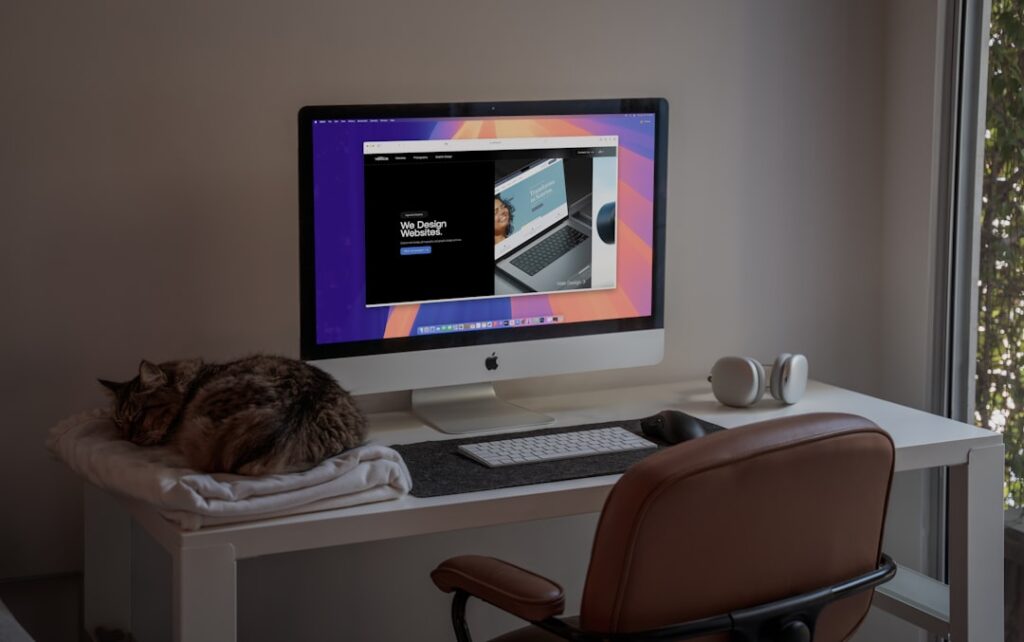The Remote Work Revolution: Why Productivity Matters Now More Than Ever
Remember when “working from home” felt a luxury or a rare perk? Fast forward to today, and it’s the norm for millions here’s the uncomfortable truth: without intentional strategies, remote work productivity can plummet faster than a dropped Zoom call. Distractions lurk everywhere – that pile of laundry, the suddenly fascinating squirrel outside, or the siren song of the fridge. Yet, when done right, remote work unlocks substantial freedom and efficiency. This isn’t just about logging hours; it’s about achieving meaningful results while balancing -being. Whether you’re a seasoned digital nomad or newly navigating the home office, mastering remote productivity is the key to thriving, not just surviving, in this new world of work. Let’s ditch the burnout and build sustainable, effective remote work habits together.
[IMAGE_1: A diverse group of people working productively from different home settings – a cozy nook, a tidy desk, a balcony]
Crafting Your Productivity Sanctuary: Designing Your Home Workspace
Your environment is the invisible hand shaping your focus. In addition, transforming a corner of your home into a true productivity zone is the crucial first step for sustained remote work productivity.
the science of dedicated space
your brain craves cues. A dedicated workspace, even if it’s just a specific chair at the kitchen table reserved for work hours, signals to your brain, “It’s time to focus.” This physical separation helps create crucial mental boundaries between “work mode” and “home mode,” reducing cognitive load and making it easier to concentrate on deep work. The absence of a commute means we lose natural transition rituals; a defined workspace helps rebuild that structure.
Essential Elements of a Productive Home Office
- Ergonomics First: Invest in a supportive chair and position your monitor at eye level. Wrist pain and backaches are major remote work productivity killers. Prioritize comfort for long-term health.
- Lighting is Key: Maximize natural light. Position your desk near a window if possible. Supplement with warm, adjustable artificial lighting to reduce eye strain during darker hours. Avoid harsh overhead lights.
- Minimize Distractions: Face away from high-traffic areas. Use noise-canceling headphones if ambient noise is an issue (family, street sounds). Keep non-work clutter out of sight. A tidy space fosters a tidy mind.
- Personalize (Minimally): Add one or two inspiring items – a plant, a photo, a piece of art. Too much can become distracting. Conversely, the goal is a space that feels pleasant but not overly stimulating.
mastering the clock: time management strategies that work remotely
without the structure of an office, time can easily bleed away. Effective time management is the engine driving consistent remote work productivity.
Structuring Your Day for Peak Performance
Forget rigid 9-to-5 mimicking if it doesn’t suit your rhythm. Identify your biological prime time – are you a focused morning person or a night owl? Schedule your most demanding cognitive tasks (deep writing, complex problem-solving) during these peak energy windows. Protect this time fiercely. Use lower-energy periods for administrative tasks, emails, or meetings.
Taming the Task Beast: Prioritization Techniques
- Time-Blocking: Assign specific blocks of time on your calendar for specific tasks or types of work (e. G. “Project Deep Dive: 9 AM – 11 AM,” “Email & Admin: 2 PM – 3 PM”). Treat these blocks immovable appointments.
- The Eisenhower Matrix: Categorize tasks: Urgent/Important (Do First), Important/Not Urgent (Schedule), Urgent/Not Important (Delegate if possible), Not Urgent/Not Important (Eliminate). Focus relentlessly on Quadrant 2 (Important/Not Urgent) for proactive productivity.
- The Pomodoro Technique: Work in focused 25-minute sprints followed by a 5-minute break. After four “Pomodoros,” take a longer 15-30 minute break. This combats fatigue and maintains mental freshness.
Setting Boundaries to Prevent Burnout
Remote work productivity depends on sustainable habits. Clearly define your start and end times. Communicate these to your team and household. Additionally, actively schedule breaks – step away from the screen, move your body, have lunch not at your desk. Use calendar blockers for lunch and personal time. Turn off non-essential notifications outside work hours. Protecting your off-time is essential for recharging and maintaining long-term output.
[IMAGE_2: A close-up of a -organized digital calendar showing time blocking. Color-coding]
communication: the lifeline of remote team productivity
when you’re not sharing a physical space, clear, intentional communication becomes the absolute bedrock of team remote work productivity. Additionally, miscommunication thrives in the digital void.
choosing the right channel
not every message needs a meeting! Match the tool to the task:
- Complex/Delicate Topics: Video call (Zoom, Google Meet) for nuance and non-verbal cues.
- Quick Questions/Updates: Instant Messaging (Slack, Teams) for speed.
- Documenting Decisions/Processes: Project Management Tools (Asana, Trello, ClickUp) or shared docs (Google Docs, Confluence) for clarity and reference.
- Formal Updates/Non-Urgent Info: Email for asynchronous, documented communication.
Over-communicate context and expectations. Thus, assume positive intent in written communication, as tone is easily misinterpreted.
running effective virtual meetings
bad meetings are a notorious drain on remote work productivity. Fight back:
- Agenda is King: Send a clear agenda with objectives and required prep in advance. Stick to it ruthlessly.
- Timebox Relentlessly: Start and end on time. 25 or 50 minutes often works better than 30 or 60. Designate a timekeeper.
- Video On (When Possible): Encourages engagement and connection. Use backgrounds if needed for privacy.
- Facilitate Actively: Encourage participation, mute non-speakers in large groups, summarize key points, and assign clear action items with owners and deadlines before closing.
- Async First: Ask, “Could this be an email or document instead?” Default to async communication unless real-time interaction is truly necessary.
Fueling the Engine: -being as the Foundation of Productivity
You are your most important tool. Neglecting your physical and mental health is the fastest way to sabotage your remote work productivity. Sustainable output requires a healthy operator.
Combating Isolation and Loneliness
Lack of casual office interactions can take a toll. Furthermore, proactively build connection:
- schedule virtual coffee/lunch: informal video chats with colleagues not about work.
- utilize “watercooler” channels: dedicate a chat channel for non-work banter, hobbies, or sharing pet photos.
- prioritize face-to-face (if possible): occasional team meetups. Co-working days can significantly boost morale and connection.
- seek external community: engage in online groups, hobbies, or local activities outside of work.
the non-negotiables: movement, nourishment, rest
- move your body: schedule short movement breaks every hour (stretch, walk). Aim for regular exercise – it boosts energy, focus, and mood, directly impacting remote work productivity.
- Hydrate & Nourish: Drink water consistently. Furthermore, plan healthy meals and snacks to avoid energy crashes from sugary or processed foods. Don’t eat lunch while working!
- Prioritize Sleep: Maintain a consistent sleep schedule. Poor sleep devastates cognitive function and focus. Create a calming pre-bed routine away from screens.
[IMAGE_3: Someone taking a break from their desk to stretch or looking out a window mindfully]
Building Your Digital Arsenal: Essential Tools for Remote Productivity
The right technology stack removes friction and supercharges your remote work productivity. Here’s a breakdown of must-haves:
Core Categories & Top Contenders
- Communication Hub: Slack, Microsoft Teams (combine chat, video, file sharing).
- Video Conferencing: Zoom, Google Meet, Microsoft Teams.
- Project & Task Management: Asana, Trello, ClickUp, Monday. Com, Jira (for tech teams).
- Document Collaboration: Google Workspace (Docs, Sheets, Drive), Microsoft 365 (Word, Excel, OneDrive/SharePoint).
- Cloud Storage & File Sharing: Google Drive, Dropbox, OneDrive, Box.
- Password Management: LastPass, 1Password, Dashlane (critical for security and efficiency).
- Focus Tools: Forest, Freedom (block distracting websites/apps during focus blocks).
Integrating Your Toolkit
Avoid tool sprawl! Seek integrations. Can your project management tool notify the team in Slack? Can documents live within project tasks? Streamlining workflows between tools prevents context switching and lost information, significantly boosting remote work productivity. Regularly review and prune tools you don’t genuinely use.
Conclusion: Building Your Sustainable Remote Productivity System
Mastering remote work productivity isn’t about squeezing every last drop of effort from your day. It’s about designing a sustainable system that blends focused work, clear communication, robust -being, and the right tools. It requires experimentation – what works for your colleague might not work for you. In addition, pay attention to your energy, your distractions, and your unique rhythms. Start small: implement one new strategy this week, whether it’s time-blocking your calendar, setting stricter boundaries, or optimizing your workspace. Celebrate the wins, learn from the stumbles, and keep refining. As a result, the payoff is immense: greater control over your time, reduced stress, and the ability to deliver exceptional results while enjoying the flexibility of remote work. Now, go conquer your day!
Ready to Level Up? Share your top remote productivity tip in the comments below! What’s one challenge you’re still facing? Moreover, let’s learn from each other.
remote work productivity: frequently asked questions (faqs)
q1: i get distracted so easily at home. How can I stay focused?
Distraction is the #1 enemy! Start by creating a dedicated workspace to signal “work mode” to your brain. Use noise-canceling headphones and tools Freedom or Forest to block distracting websites/apps. Practice the Pomodoro Technique (25-min focused sprints, 5-min breaks). Identify your peak focus times and schedule demanding tasks then. Communicate boundaries with household members. Remember, focus is a muscle – it takes practice!
Q2: How can I effectively communicate with my remote team without constant meetings?
Master the art of async communication! Use project management tools (Asana, Trello) for updates and task tracking. Document everything in shared wikis (Confluence, Notion). Utilize chat (Slack/Teams) wisely – use threads and clear subject lines. Only call a meeting with a strict agenda and clear objective. Default to writing concise, context-rich messages. Encourage over-communication of status and blockers proactively.
Q3: I struggle to “switch off” after work. How do I set boundaries?
Boundaries are crucial for preventing burnout. Set a firm end time and communicate it. Create a shutdown ritual: close tabs, review tomorrow’s priorities, tidy your desk. Physically leave your workspace if possible. Turn off work app notifications on your phone after hours. Schedule evening activities to force a break. Use calendar blockers for personal time. Protect your off-hours as fiercely as your focus time – your long-term productivity depends on it.
Q4: What are the most essential tools for boosting remote work productivity?
Your core toolkit should include: a reliable communication hub (Slack/Teams), robust video conferencing (Zoom/Meet), a project/task manager (Asana/Trello/ClickUp), and cloud document collaboration (Google Workspace/MS 365). Password managers (LastPass/1Password) and cloud storage (Drive/Dropbox) are vital. Consider focus apps (Freedom) and time-blocking your calendar. Prioritize tools that integrate to minimize switching costs. Moreover, choose what solves your specific pain points.
q5: how do i combat the feeling of isolation while working remotely?
proactively build connection. Schedule regular virtual coffee chats or lunches with colleagues just to socialize. Participate actively in non-work team channels (e. G. #pets, #hobbies). If feasible, arrange occasional in-person meetups or co-working days. Join online communities or local groups related to your interests. Structure your day to include offline social activities outside work hours. Remember, connection is a need – prioritize it any other work task for your -being and productivity.


